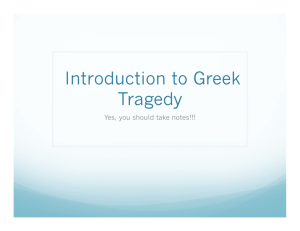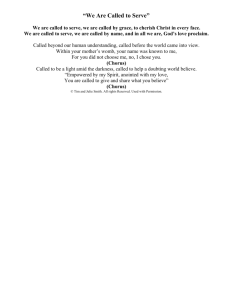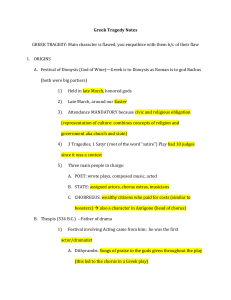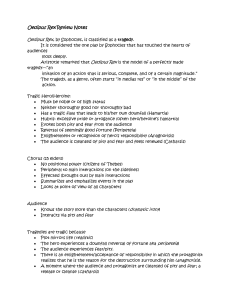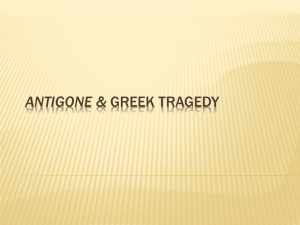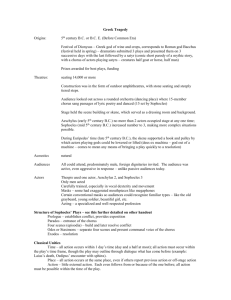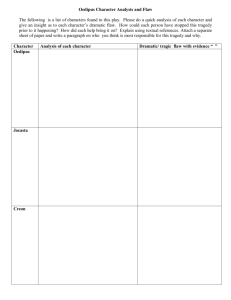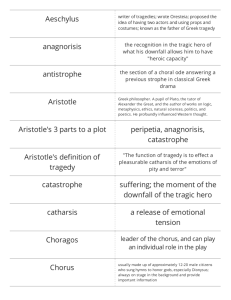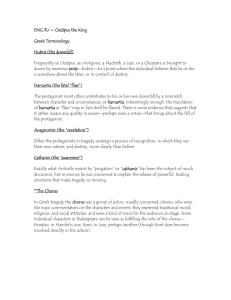Antigone
advertisement
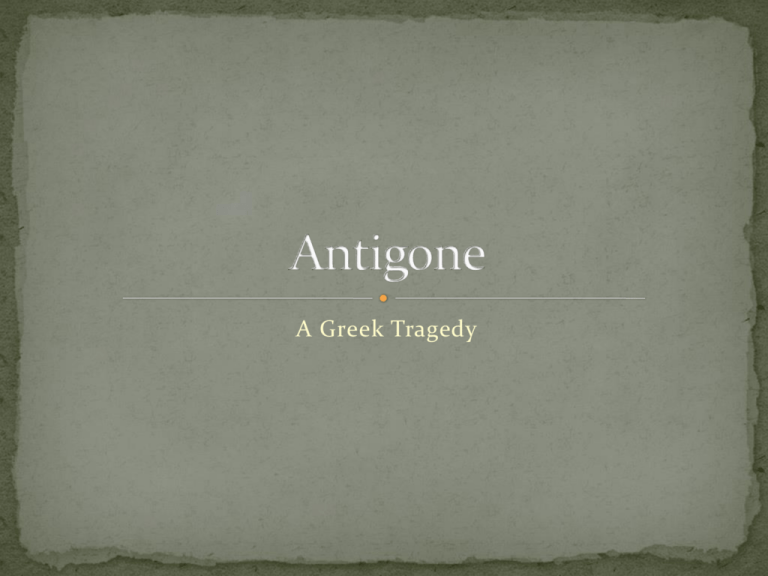
A Greek Tragedy Aristotle defines tragedy as “the imitation of an action which is serious, complete, of a certain magnitude, couched in poetic language. It should be dramatic, with incidents arousing pity and fear, which bring about a purgation of these emotions.” Pity is aroused in the audience for the character(s), and we fear lest the same misfortune happen to us. Purgation/catharsis is a cleansing; a release of emotions. According to Aristotle, “comedy portrays men as worse than they are and tragedy as better than in actual life.” He also notes that Sophocles “drew men as they ought to be.” Characteristics of a tragic hero: Undergoes a morally significant struggle that ends disastrously. Essentially a superior person who is treated sympathetically (we like them in spite of what the hero might do) Not all good or all bad (very human) Has a high, respected position to disgrace or unhappiness or death. Hamartia – some defect in the tragic character that helps cause his own ruin. For the Greeks this flaw is hubris (excessive pride). The flaw may seem to be jealousy, anger, ambition, etc., but it will always be because the character thinks himself too superior in some way. Because of this hubris, whatever happens to the tragic hero is not all undeserved. 1. 2. 3. Reversal of situation (peripety) – good begins to slide or go bad Recognition (a.k.a. epiphany) – discovery of the critical fact – the hero realizes his own flaw has brought him to this low point. Scene of suffering – destructive or painful action such as a death on the stage, bodily agony, wounds, etc. (the suffering and final submission of the hero) Time – 24 hours for the action of the play. Place – no change of scenery Action – no subplot (an action which happens elsewhere is told by another character) Prologue – introductory section that gives the background (usually expository rather than dramatic) Parados – entrance of chorus; chorus chants more background to the story. Episodes and Stasimon – Action begins with the first episode (usually 5 episodes) followed by a parados (chorus). The choral odes are called stasima. Exodus – the final action of the play. 2 features: messenger speech and the deus ex machina, in which the deity is brought in to intervene in the action. Chorus – there is always a chorus in Greek tragedy. Chorus fulfills several functions: 1. 2. 3. 4. 5. 1. 2. 3. 4. 5. Members sang, danced and played instruments Ideal audience – responding to the action as the poet intended. Modulated the atmosphere and tone (representative of typical Athenian citizens – conservative but not submissive) Questions new characters as to origin or purpose Choral odes showed the passage of time. Major conflict: Individual conscience at odds with established authority. Questions for discussion: When we know that those in power are morally wrong, do we break their laws, or do we collaborate with them by obeying? How important is doing the right thing? [What is “right” and what is “wrong”?] http://www.youtube.com/watch?v=5czp9S4u26M http://www.youtube.com/watch?v=3XXQMDGErL0
